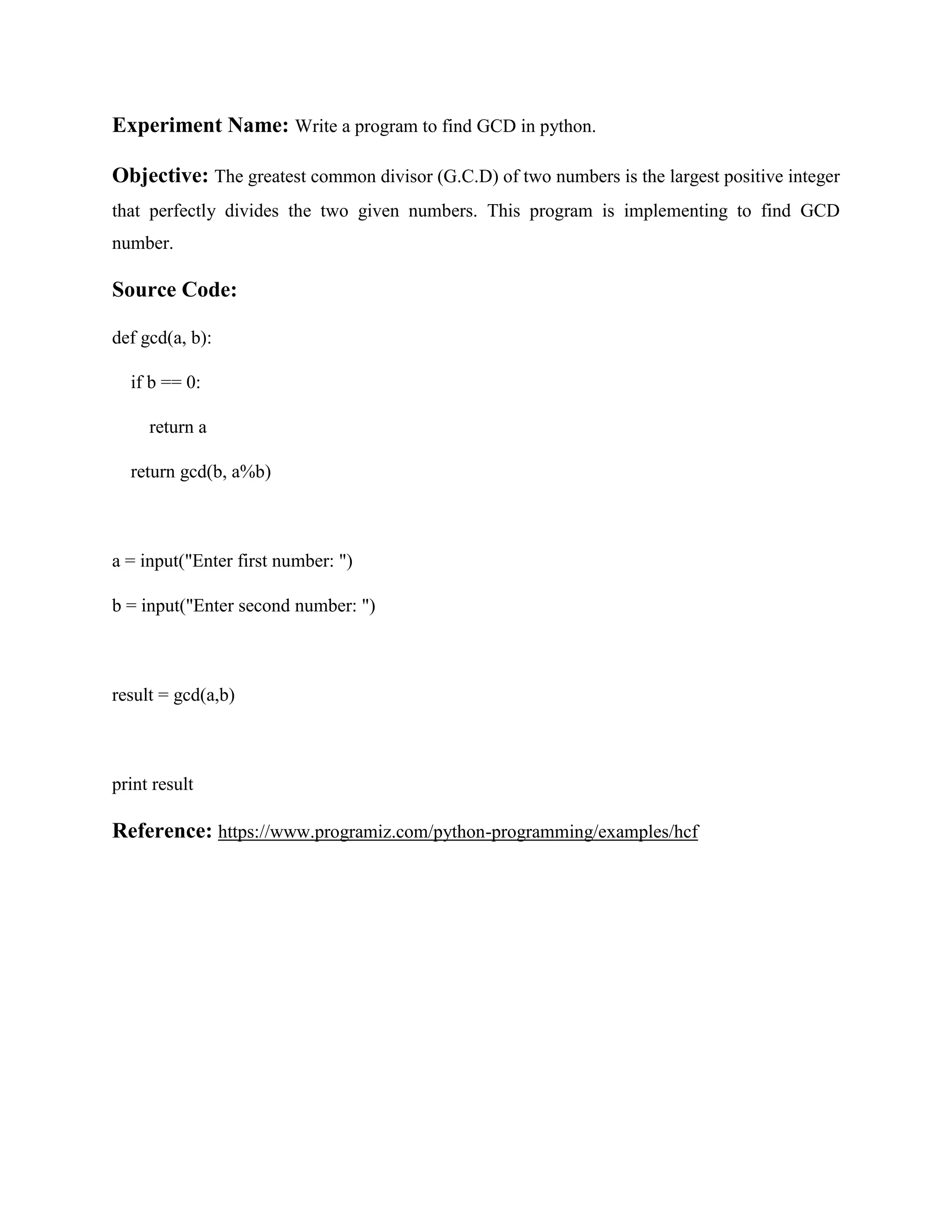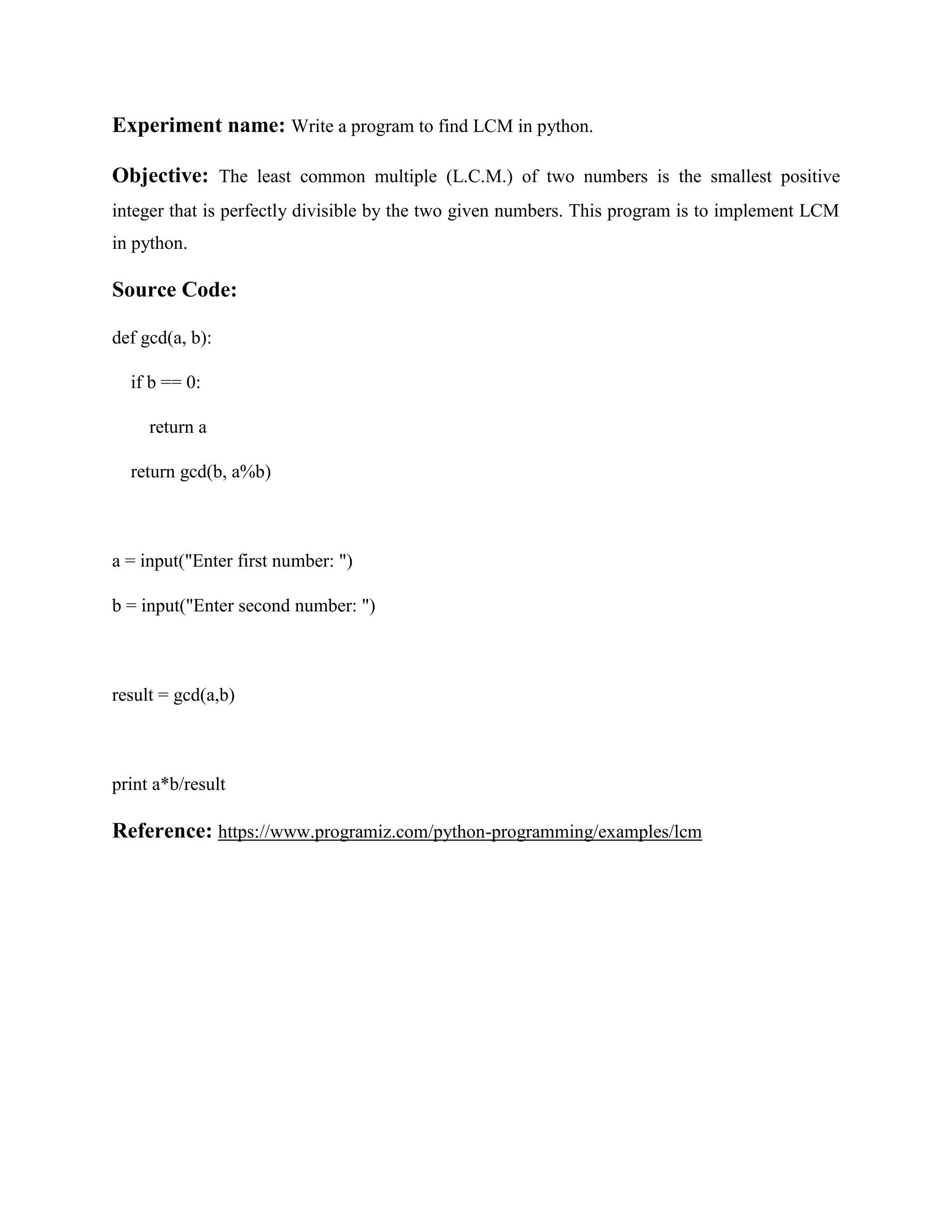The document outlines multiple experiments aimed at implementing various mathematical algorithms in Python, including linear congruential generators, Bernoulli distribution, binomial distribution, geometric distribution, GCD, and LCM. Each experiment is accompanied by its objective and sample source code. References to external resources for further reading are also provided.
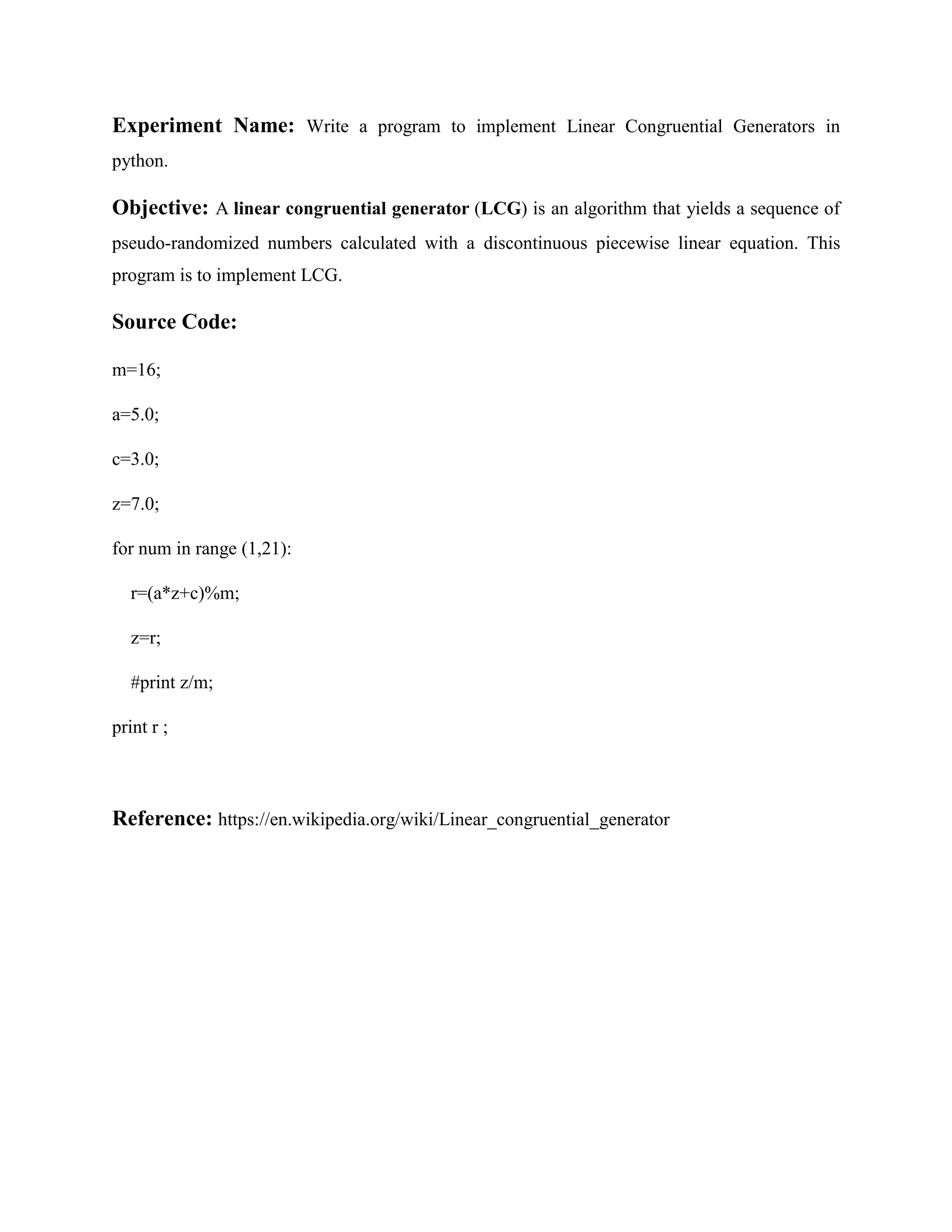
![Experiment Name: Write a program to implement Bernouli distribution in python. Objective: The Bernoulli distribution essentially models a single trial of flipping a weighted coin. It is the probability distribution of a random variable taking on only two values, 1 ("success") and 0 ("failure") with complementary probabilities p and 1-p respectively. This program is to implement Bernouli distribution in python. Source Code: u = [] def test(p): printf() if u[0]<=p: return 1 else: return 0 def printf(): m=16; a=5.0; c=3.0; z=7.0; for num in range (1,21): r=(a*z+c)%m; #print r; z=r; u.append(z/m)](https://image.slidesharecdn.com/lab-report-180514211943/75/A-lab-report-on-modeling-and-simulation-with-python-code-2-2048.jpg)
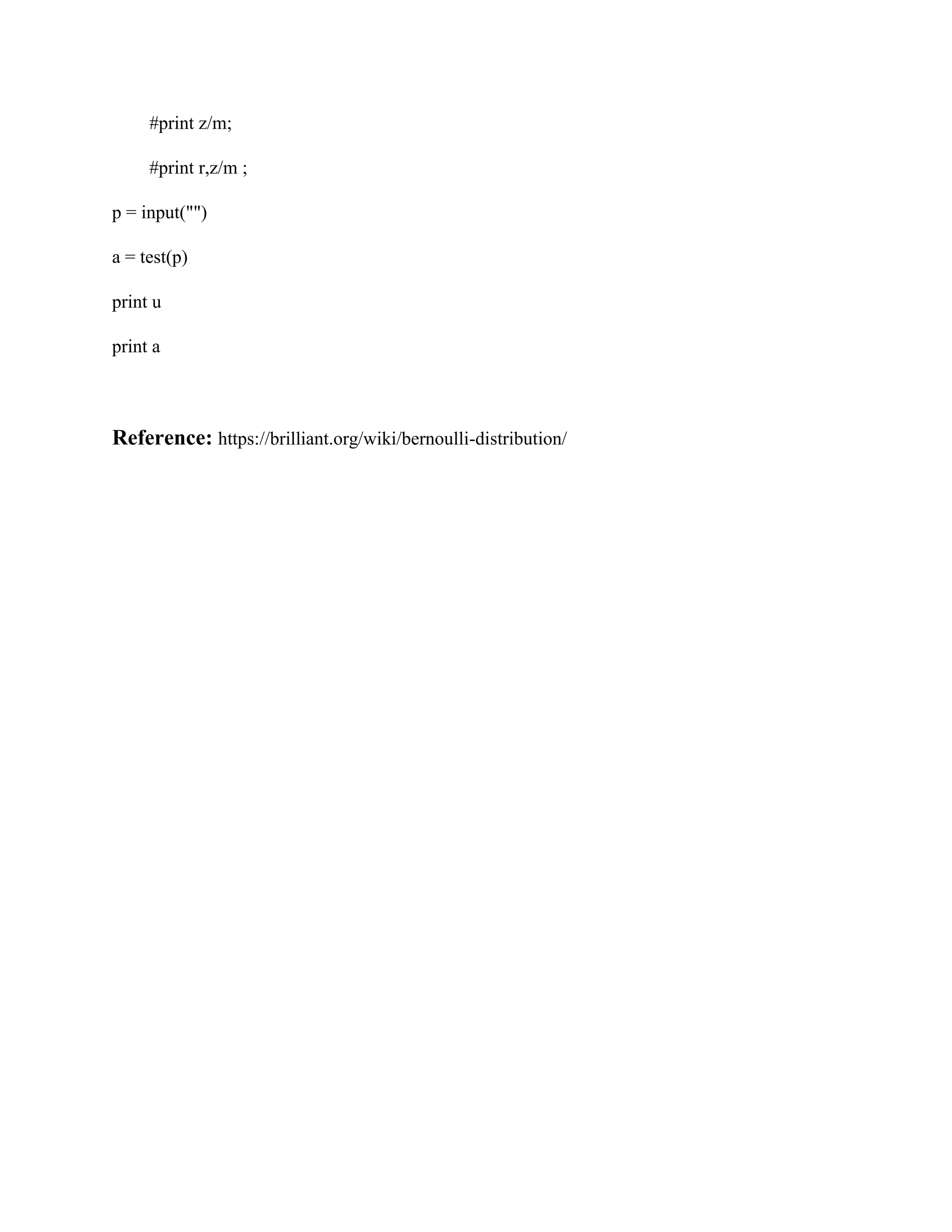
![Experiment Name: Write a program to implement Binomal distribution in python. Objective: A binomial distribution is the sum of independent and identically distributed Bernoulli random variables. This program is to implement Binomal in python. Source Code: u = [] count = [] m = 16 a = 5 c = 3 z = 7 for num in range (m): r = (a*z+c)%m z = r u.append(float(z)/m) print u def test(w): count = 0 for i in w: print u[0] ," ",i if u[0]<=i: count+=1; return count p = []](https://image.slidesharecdn.com/lab-report-180514211943/75/A-lab-report-on-modeling-and-simulation-with-python-code-4-2048.jpg)
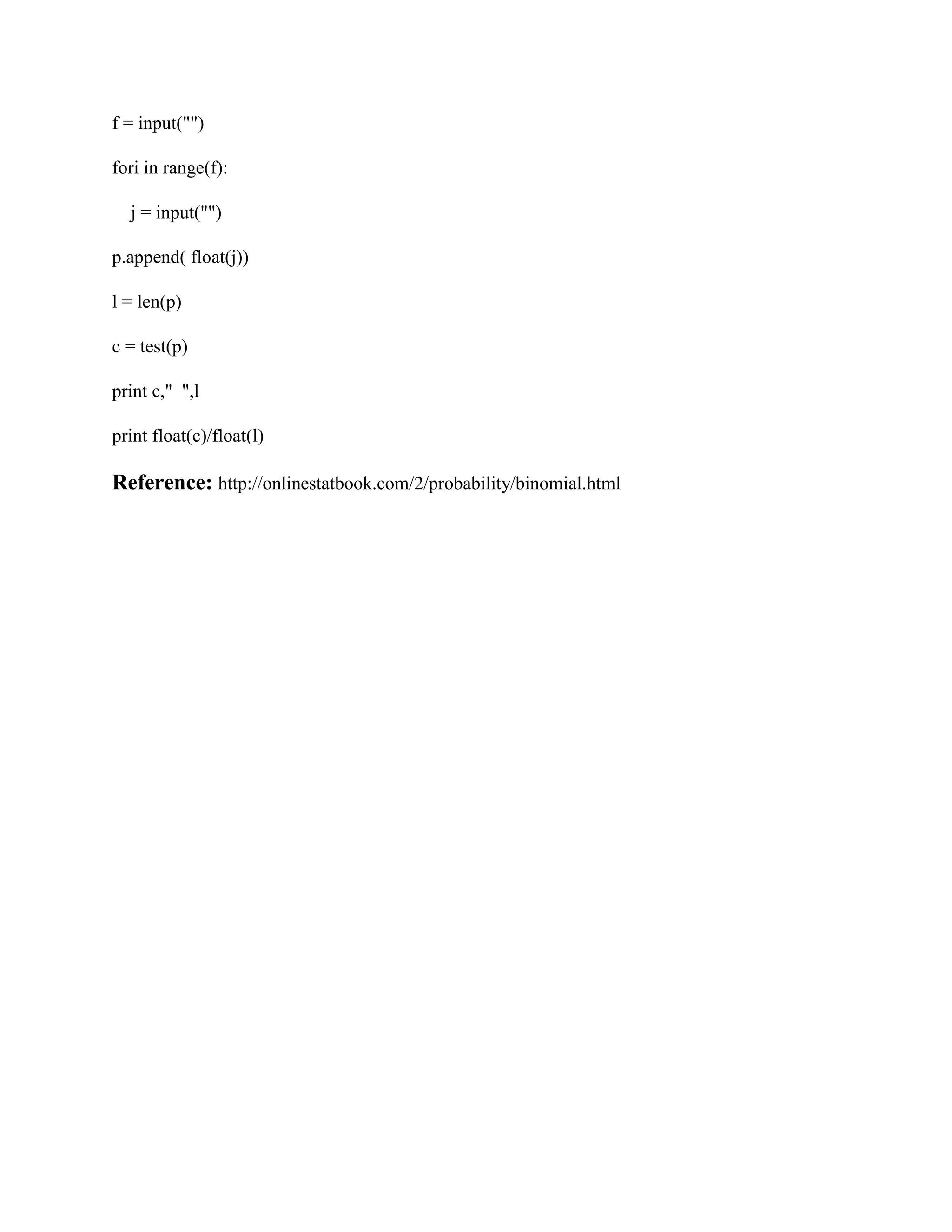
![Experiment Name: Write a program to implement geometry distribution in python. Objective: The geometric distribution is a special case of the negative binomial distribution. It deals with the number of trials required for a single success. Thus, the geometric distribution is a negative binomial distribution where the number of successes (r) is equal to 1. This program is to implement geometry algorithm in python. Source Code: u = [] count = [] m = 16 a = 5 c = 3 z = 7 for num in range (m): r = (a*z+c)%m z = r u.append(float(z)/m) print u def test(w): count = 0 for i in w: print u[0] ," ",i if u[0]<=i: count+=1](https://image.slidesharecdn.com/lab-report-180514211943/75/A-lab-report-on-modeling-and-simulation-with-python-code-6-2048.jpg)
![else: break return count p = [] f = input("") fori in range(f): j = input("") p.append( float(j)) l = len(p) c = test(p) print c," ",l print float(c)/float(l) Reference: stattrek.com/statistics/dictionary.aspx?definition=geometric_distribution](https://image.slidesharecdn.com/lab-report-180514211943/75/A-lab-report-on-modeling-and-simulation-with-python-code-7-2048.jpg)
